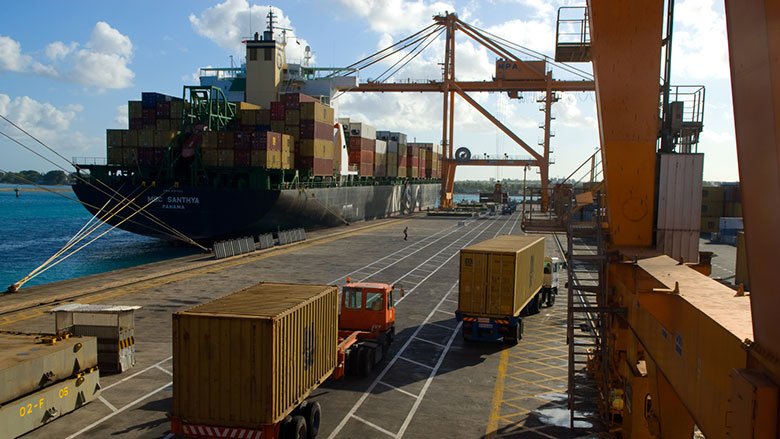Latest Developments in African Trade: Key News and Insights
June 3, 2024 | by tradepulse.qivook.com

Emerging Trade Agreements and Policies
The African continent has witnessed a surge in the formulation and implementation of new trade agreements and policies aimed at fostering economic integration and growth. These initiatives are pivotal in eliminating trade barriers, enhancing market access, and promoting sustainable development across the region. Among the most significant developments is the African Continental Free Trade Area (AfCFTA), which seeks to create a single market for goods and services, encompassing 54 of the 55 African Union nations. The AfCFTA aims to reduce tariffs by 90%, enhance intra-African trade, and bolster economic diversification.
Recent bilateral agreements have also emerged as key drivers of change. For instance, Kenya and the United Kingdom have entered into a Strategic Economic Partnership Agreement, which is expected to boost trade and investment between the two nations. Similarly, the Nigeria-Morocco Gas Pipeline project, a landmark bilateral initiative, aims to enhance energy trade, providing significant opportunities for economic growth and regional cooperation.
Multilateral trade agreements are equally transformative. The Tripartite Free Trade Area (TFTA), which includes members of the East African Community (EAC), Southern African Development Community (SADC), and Common Market for Eastern and Southern Africa (COMESA), exemplifies efforts towards creating larger, more integrated markets. By harmonizing trade policies and reducing non-tariff barriers, the TFTA seeks to facilitate smoother and more efficient trade flows within the region.
Policy reforms have also been a focal point. Several African countries are implementing regulatory changes to streamline customs procedures, simplify trade documentation, and enhance transparency. For example, Ghana’s introduction of the Integrated Customs Management System (ICUMS) aims to expedite customs clearance processes, thereby reducing costs and delays. Similarly, Senegal’s adoption of the Single Window for Foreign Trade (SWFT) has improved efficiency by centralizing trade-related procedures.
The anticipated benefits of these agreements and policies are substantial. They include increased foreign direct investment, job creation, and improved competitiveness of African products in global markets. However, challenges such as infrastructural deficits, political instability, and capacity constraints must be addressed to fully realize these benefits.
Overall, the emerging trade agreements and policies across Africa underscore a committed effort towards economic integration and sustainable growth. By continuing to address trade barriers and enhancing regulatory frameworks, African nations are poised to unlock new economic opportunities and foster a more prosperous future for the continent.
Key Economic Indicators and Market Trends
The African continent is experiencing notable shifts in its economic landscape, driven by a combination of internal growth dynamics and external influences. A comprehensive analysis of key economic indicators such as GDP growth rates, trade volumes, and sectoral performance reveals a nuanced picture of African trade. Recent data indicates a steady increase in GDP across various regions, with East Africa leading at an average growth rate of 5.3%, followed by West Africa at 3.6%. These growth rates are particularly significant in light of the global economic slowdown and highlight the resilience of African economies.
Trade volumes have also seen substantial changes, influenced by both regional trade agreements and international partnerships. Intra-African trade is on an upward trajectory, bolstered by the African Continental Free Trade Area (AfCFTA), which aims to create a single market for goods and services. This has resulted in increased trade activities within the continent, particularly in sectors such as agriculture, manufacturing, and services. Noteworthy is the performance of the agricultural sector, which continues to dominate exports, particularly in commodities like coffee, cocoa, and tea.
On the import side, there is a growing shift towards technology and machinery, reflecting the continent’s focus on industrialization and modernization. Emerging markets such as Nigeria, Kenya, and South Africa are playing pivotal roles in this transformation, attracting significant foreign direct investment. However, the impact of global economic conditions cannot be overlooked. Currency fluctuations, especially the depreciation of local currencies against the US dollar, pose challenges to trade balances. Moreover, international trade tensions, particularly between major economies like the US and China, have ripple effects on African markets, affecting commodity prices and trade policies.
Despite these challenges, the overall economic health of the continent appears promising. The diversification of trade partners and commodities, coupled with strategic economic policies, suggests a positive outlook for future trade dynamics. By closely monitoring these key economic indicators and market trends, stakeholders can better navigate the complexities of African trade and harness its potential for sustainable growth.
RELATED POSTS
View all

